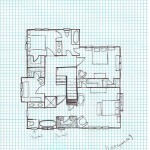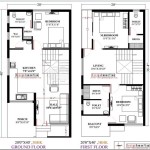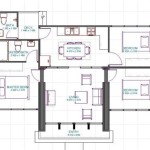New Home Plans Photos: Kerala Style
Kerala, a southwestern state in India, is renowned for its lush greenery, backwaters, and unique architectural style. Kerala-style architecture, often referred to as 'Kerala architecture,' is characterized by its sloping roofs, red clay tiles, spacious courtyards, and the use of natural materials like wood and laterite. This style is deeply rooted in the region’s climate and cultural heritage, prioritizing ventilation, shade, and a connection with nature. Modern adaptations of Kerala architecture combine traditional elements with contemporary design principles, resulting in homes that are both aesthetically pleasing and functionally efficient. The availability of new home plans photos depicting Kerala style homes provides valuable inspiration and guidance for individuals seeking to build or renovate their properties in this distinctive architectural fashion.
The allure of Kerala-style homes stems from their ability to seamlessly blend with the natural environment. The use of locally sourced materials not only reduces the environmental impact but also ensures that the homes are well-suited to the local climate. The sloping roofs, typically covered in red clay tiles, effectively shed rainwater, preventing water damage and maintaining a comfortable indoor temperature. Wide verandahs and courtyards offer shaded spaces for relaxation and interaction with nature. Furthermore, the emphasis on ventilation, achieved through strategically placed windows and vents, helps to keep the interiors cool and fresh, even during the hot summer months. Many designs now incorporate modern amenities, such as solar panels and rainwater harvesting systems, further enhancing the sustainability of these homes.
The proliferation of new home plans photos centered on Kerala style allows prospective homeowners to explore a wide range of design options. These photos often showcase various aspects of the architecture, including the exterior facade, interior layout, landscaping, and use of natural light. By examining these visual representations, individuals can gain a better understanding of the different elements that contribute to the overall aesthetic and functionality of Kerala-style homes. This visual exploration can also help them to identify their preferred design features and communicate their vision effectively to architects and builders.
Key Elements of Kerala Style Architecture
Several key elements define Kerala-style architecture and contribute to its distinctive character. Understanding these elements is crucial for anyone planning to incorporate this architectural style into their home design.
The sloping roof is perhaps the most recognizable feature of Kerala-style homes. Typically constructed with a wooden frame and covered in red clay tiles, the sloping roof serves the primary purpose of effectively shedding rainwater. The steep angle of the roof minimizes water accumulation and prevents leaks, ensuring the longevity of the structure. The overhanging eaves provide shade to the walls and windows, reducing the heat gain and maintaining a comfortable indoor temperature. In modern interpretations, the sloping roof may be constructed with alternative materials like concrete or metal, while still retaining the traditional aesthetic.
Courtyards, also known as 'nadumuttams,' are another essential element of Kerala-style homes. These open-air spaces are typically located at the center of the house and serve as a focal point for family activities. Courtyards provide natural light and ventilation to the surrounding rooms, creating a bright and airy atmosphere. They are often adorned with plants and water features, further enhancing the connection with nature. The courtyard also serves as a social space for family gatherings and celebrations. In smaller homes, the courtyard may be reduced in size or incorporated as a balcony or terrace, while still maintaining its essential function.
The use of natural materials is a hallmark of Kerala-style architecture. Wood, particularly teak and rosewood, is extensively used for the construction of the roof frame, doors, windows, and furniture. Laterite, a porous rock found abundantly in Kerala, is often used for the construction of the walls. These natural materials not only contribute to the aesthetic appeal of the homes but also provide excellent insulation and durability. In contemporary designs, the use of natural materials may be combined with modern materials like concrete and steel to achieve a balance between traditional and contemporary styles.
Benefits of Choosing Kerala Style Home Designs
Opting for a Kerala-style home design offers numerous benefits, ranging from aesthetic appeal to functional advantages. Understanding these benefits can help individuals make informed decisions about their home design choices.
Kerala-style homes are inherently energy-efficient. The sloping roofs, wide verandahs, and courtyards provide shade and ventilation, reducing the need for artificial cooling and heating. The use of natural materials like wood and laterite further enhances the insulation properties of the homes, maintaining a comfortable indoor temperature year-round. By minimizing the reliance on air conditioning and heating systems, Kerala-style homes contribute to significant energy savings and a reduced carbon footprint. Modern adaptations often incorporate solar panels and rainwater harvesting systems, further enhancing the sustainability of these homes.
The emphasis on natural light and ventilation creates a healthy and comfortable living environment. The strategic placement of windows and vents allows for ample airflow, reducing the accumulation of stale air and promoting a fresh and airy atmosphere. The courtyards provide natural light to the surrounding rooms, reducing the need for artificial lighting during the day. Exposure to natural light and fresh air has been shown to have numerous health benefits, including improved mood, reduced stress, and enhanced sleep quality. Kerala-style homes, therefore, contribute to the overall well-being of their occupants.
Kerala-style homes are designed to be durable and long-lasting. The use of high-quality natural materials and traditional construction techniques ensures the structural integrity of the homes. The sloping roofs effectively shed rainwater, preventing water damage and maintaining the longevity of the structure. The wide verandahs and courtyards provide protection from the elements, reducing the wear and tear on the walls and windows. With proper maintenance, Kerala-style homes can withstand the test of time and provide a comfortable and secure living environment for generations.
Planning and Implementing Kerala Style Home Designs
Planning and implementing a Kerala-style home design requires careful consideration of various factors, including the site conditions, budget constraints, and individual preferences. A systematic approach can help to ensure that the final result meets the expectations and requirements of the homeowner.
The first step in planning a Kerala-style home is to assess the site conditions. This involves evaluating the topography, soil type, climate, and orientation of the site. The design should be tailored to the specific characteristics of the site to maximize the use of natural light and ventilation and minimize the impact on the environment. For example, the orientation of the house should be carefully considered to take advantage of the prevailing winds and minimize exposure to the harsh sun. The topography of the site should be considered when designing the layout of the house, ensuring that the building is properly integrated into the landscape.
Establishing a realistic budget is crucial for successful implementation of a Kerala-style home design. The cost of construction can vary significantly depending on the materials used, the size of the house, and the complexity of the design. It is important to obtain accurate cost estimates from experienced contractors and architects and to allocate sufficient funds for all aspects of the project, including materials, labor, permits, and landscaping. It is also advisable to keep a contingency fund to cover unexpected expenses that may arise during the construction process.
Working with experienced architects and builders is essential for achieving a successful Kerala-style home design. Architects can help to translate the homeowner's vision into a detailed design that meets their specific needs and preferences. Builders can ensure that the construction is carried out to the highest standards of quality and that the project is completed on time and within budget. It is important to choose architects and builders who have experience in Kerala-style architecture and who are familiar with the local building codes and regulations. Regular communication and collaboration between the homeowner, architect, and builder are crucial for ensuring that the project progresses smoothly and that any issues are addressed promptly.
The availability of new home plans photos depicting Kerala style creates several opportunities for homeowners. Analyzing these photos allows the homeowner to envision how the final project will appear. Furthermore, this collection of new home plans photos provides creative resources, guiding homeowners to select the best features of Kerala style for their new construction.

Kerala Style Home Plans Model

Most Popular Style Home Design With 3d Elevation Kerala House Plans Cost Two Small Latest Designs

Kerala Style House Design East Facing Home Plan With Elevation Houseplansdaily

Free Kerala House Plan For Spacious 3 Bedroom Home Plans Family Model

Top 10 Modern Kerala House Design Images In 2024 Namma Family

Kerala Style House Designs And Floor Plans Homeminimalis Throughout Beautiful New Home Pla Model Plan Design

Contemporary House Plans In Kerala Model Home

60 Kerala House Designs Trending In 2024 Traditional And Modern Look

Kerala Style House Plans Low Cost Small In With Photos

Kerala Style Home Design 2 Bedroom House Small Plan








